Great Skua
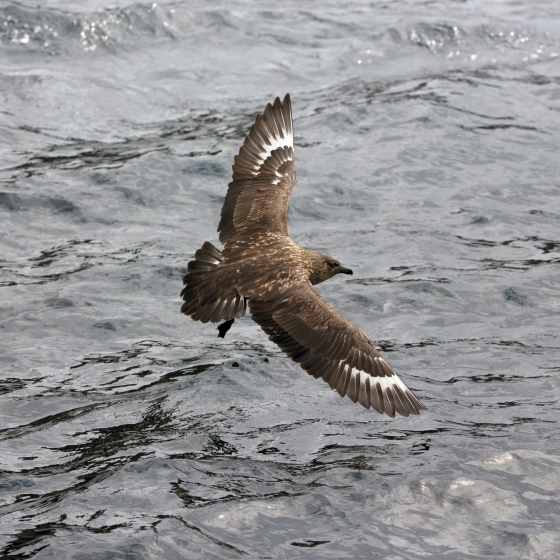
Introduction
This dark brown, large powerful seabird with obvious white wing flashes can be seen around our coasts throughout the year.
Great Skuas breed on our northern islands during the summer months but outside of the breeding season they can be seen in coastal waters anywhere in the UK. The Great Skua is a predatory seabird that will hunt small birds, rodents and Rabbits; it can also be seen chasing other seabirds in an attempt to relieve them of any food that they might have caught.
Whilst Great Skuas can be seen throughout the year most are migratory, heading to offshore West Africa. In 2022, many skuas died on their British breeding grounds in a severe outbreak of avian influenza.

Key Stats
Identification
ID Videos
This section features BTO training videos headlining this species, or featuring it as a potential confusion species.
Skuas
Songs and Calls
Call:
Flight call:
Status and Trends
Conservation Status
Population Change
The population and breeding range of the Great Skua have both been increasing since 1900 (JNCC 2022). Data from Censuses suggest that numbers more than trebled between 1969–70 and Seabird 2000 (1998–2002). The subsequent trend is variable across different colonies and will not be clear until the results of the recent Seabirds Count (2015–2021) are available (JNCC 2022). An avian influenza virus affected large numbers of Great Skuas across different Scottish islands in summer 2021 (Banyard et al. 2022): the population level impacts of this outbreak are as yet unclear.
Distribution
More than half the world population of Great Skuas is found in the UK, along the northwest seaboard of Scotland and Ireland, with highest concentrations on Shetland and Orkney, Handa, Sutherland and St Kilda.
Occupied 10-km squares in UK
or view it on Bird Atlas Mapstore.
or view it on Bird Atlas Mapstore.
European Distribution Map
Distribution Change
Great Skua breeding range expanded by 111% since the 1968–72 Breeding Atlas, mostly involving colonisation of new sites in the west of Scotland and in northwest Ireland since 2000.
Change in occupied 10-km squares in the UK
or view it on Bird Atlas Mapstore.
or view it on Bird Atlas Mapstore.
Seasonality
Great Skuas are summer visitors, arriving in March. Autumn migration of northern breeders extends into late autumn and early winter.
Weekly pattern of occurrence
The graph shows when the species is present in the UK, with taller bars indicating a higher likelihood of encountering the species in appropriate regions and habitats.

Movement
Britain & Ireland movement
Foreign locations of birds ringed or recovered in Britain & Ireland
Dots show the foreign destinations of birds ringed in Britain & Ireland, and the origins of birds ringed overseas that were subsequently recaptured, resighted or found dead in Britain & Ireland. Dot colours indicate the time of year that the species was present at the location.
- Winter (Nov-Feb)
- Spring (Mar-Apr)
- Summer (May-Jul)
- Autumn (Aug-Oct)

European movements
EuroBirdPortal uses birdwatcher's records, such as those logged in BirdTrack to map the flows of birds as they arrive and depart Europe. See maps for this species here.
The Eurasian-African Migration Atlas shows movements of individual birds ringed or recovered in Europe. See maps for this species here.
Biology
Productivity and Nesting
Nesting timing
Egg measurements
Clutch Size
Survival and Longevity
Survival is shown as the proportion of birds surviving from one year to the next and is derived from bird ringing data. It can also be used to estimate how long birds typically live.
View number ringed each year in the Online Ringing Report.
lifespan
Survival of adults
Survival of juveniles
Biometrics
Wing length and body weights are from live birds (source).
Ring Size
Classification, names and codes
Classification and Codes
- Order: Charadriiformes
- Family: Stercorariidae
- Scientific name: Stercorarius skua
- Authority: Brünnich, 1764
- BTO 2-letter code: NX
- BTO 5-letter code: GRESK
- Euring code number: 5690
Alternate species names
- Catalan: paràsit boreal
- Czech: chaluha velká
- Danish: Storkjove
- Dutch: Grote Jager
- Estonian: suuränn
- Finnish: isokihu
- French: Grand Labbe
- Gaelic: Fàsgadair-mòr
- German: Skua
- Hungarian: nagy halfarkas
- Icelandic: Skúmur
- Irish: Meirleach Mór
- Italian: Stercorario maggiore
- Latvian: liela klijkaija
- Lithuanian: didysis plešikas
- Norwegian: Storjo
- Polish: wydrzyk wielki
- Portuguese: mandrião-grande / alcaide
- Slovak: pomorník velký
- Slovenian: velika govnacka
- Spanish: Págalo grande
- Swedish: storlabb
- Welsh: Sgiwen Fawr
- English folkname(s): Bonxie
Research
Causes of Change and Solutions
Causes of change
Strong increases which occurred during the 1970s are believed to be associated with increases in fisheries discards; whilst the population increases have continued subsequently the rate of increase has been lower, possibly due to a reduction in discards and a reduction in sandeel abundance, though great skuas have managed to switch their diet to maintain population levels despite the changes to prey availability (Church et al. 2018). Following the population increases, density-dependent effects may now be limiting population growth in some parts of the breeding range (Meek et al. 2011). An avian influenza outbreak was detected in Great Skua colonies across different Scottish islands in summer 2021, with large numbers of birds observed with apparent symptoms of the disease and dying. The virus was confirmed in seven of the eight dead skuas which were examined (Banyard et al. 2022). It is not yet clear whether this outbreak has had population level effects.
Publications (5)
The status of the UK’s breeding seabirds
Author: Stanbury, A.J., Burns, F., Aebischer, N.J., Baker, H., Balmer, D., Brown, A.F., Dunn, T., Lindley, P., Murphy, M., Noble, D.G., Owens, R. & Quinn, L.
Published: 2024
Five seabird species are added to the Birds of Conservation Concern Red List in this addendum to the 2021 update, bringing the total number of Red-listed seabird species to 10, up from six since seabirds were last assessed. The Amber List of seabirds moves from 19 to 14 species, and the Green List increases from one to two species.
29.09.24
Papers
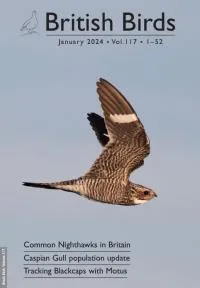
Seabird Population Trends and Causes of Change: 1986–2023
Author: Harris, S.J., Baker, H., Balmer, D.E., Bolton, M., Burton, N.H.K., Caulfield, E., Clarke, J.A.E., Dunn, T.E., Evans, T.J., Hereward, H.R.F., Humphreys, E.M., Money, S. and O’Hanlon, N.J.
Published: 2024
This report presents the latest seabird population trends in breeding abundance and productivity using data from the Seabird Monitoring Programme (SMP).The report documents changes in the abundance and productivity of breeding seabird species in Britain and Ireland from 1986 to 2023, and provides a detailed account of the 2021, 2022 and 2023 breeding seasons.This report includes both inland and coastal populations and trends from the Channel Islands, England, Isle of Man, Northern Ireland, Scotland, Wales and the Republic of Ireland, which are presented where sufficient data are available. The results from this report are used more broadly to assess the health of the wider environment, to inform policy and for conservation action.
21.11.24
Reports Research reports
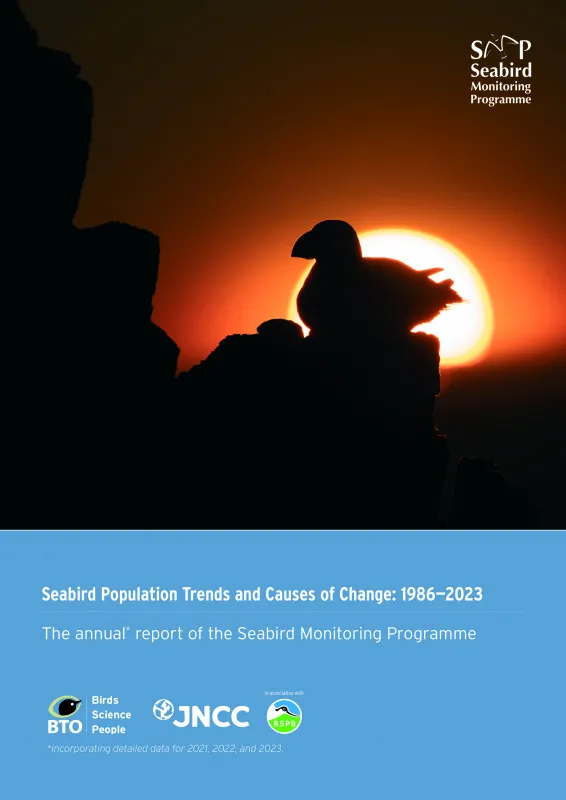
Impacts of highly pathogenic avian influenza on seabird populations in the North Sea are detectable in sea-watchers’ migration counts
Author: Macgregor, C.J., Gillings, S., Balmer, D.E., Boersch-Supan, P.H., Harris, S.J., Hereward, H.F.R., Humphreys, E.M., Pearce-Higgins, J.W., Taylor, R.C., Troost, G. & Atkinson, P.W.
Published: 2024
BTO research reveals that seabird population declines due to Highly Pathogenic Avian Influenza (HPAI) can be detected using data collected by volunteer seawatchers.
28.12.24
Papers
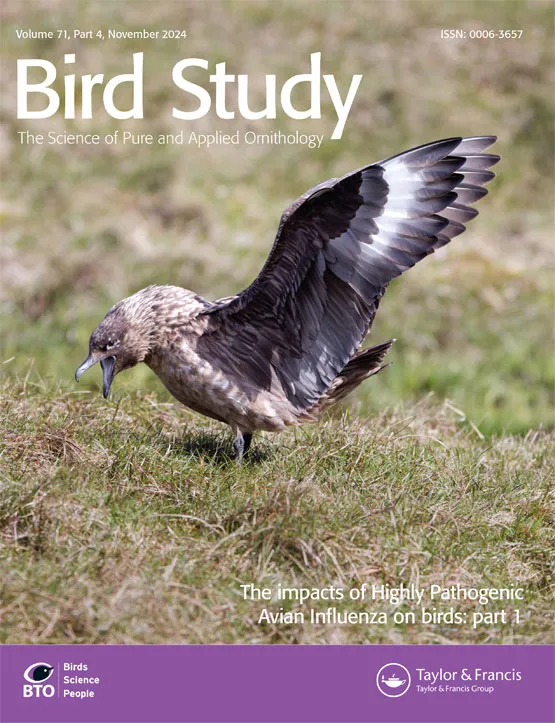
Modelling flight heights of Lesser Black-backed Gulls and Great Skuas from GPS: a Bayesian approach
Author: Ross-Smith, V.H., Thaxter, C.B., Masden, E.A., Shamoun-Baranes, J., Burton, N.H.K., Wright, L.J., Rehfisch, M.M. & Johnston, A.
Published: 2016
New research led by the BTO has used a combination of GPS-tracking and advanced statistics to provide new insights into seabird flight heights by night and day. This study gives important information on the risk of seabirds colliding with offshore wind turbines and at a time when governments worldwide are investing in offshore wind farms.
03.08.16
Papers
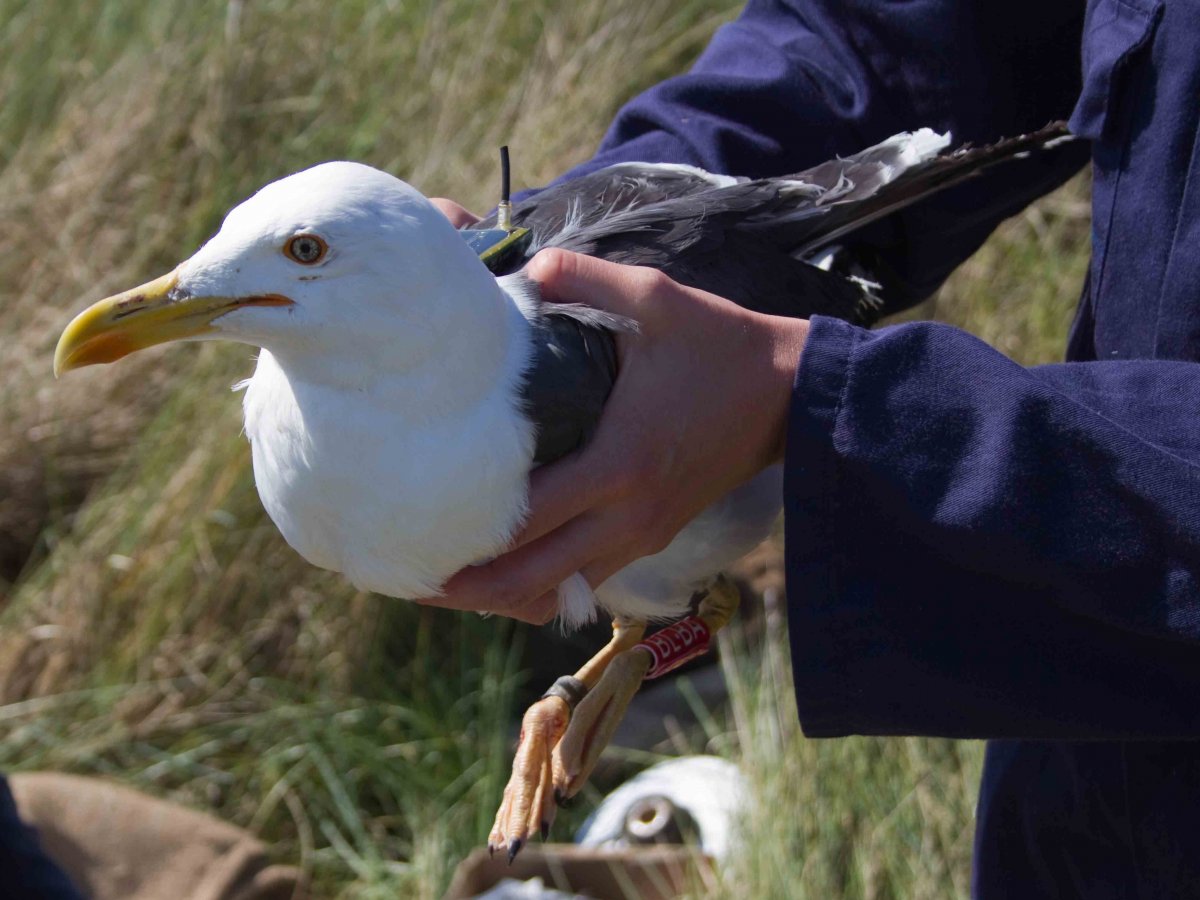
Contrasting effects of GPS device and harness attachment on adult survival of Lesser Black-backed Gulls Larus fuscus and Great Skuas Stercorarius skua
Author: Thaxter, C.B., Ross-Smith, V.H., Clark, J.A., Clark, N.A., Conway, G.J., Masden, E.A., Wade, H.M., Leat, E.H.K., Gear, S.C., Marsh, M., Booth, C., Furness, R.W., Votier, S.C. & Burton, N.H.K.
Published: 2016
22.03.16
Papers

